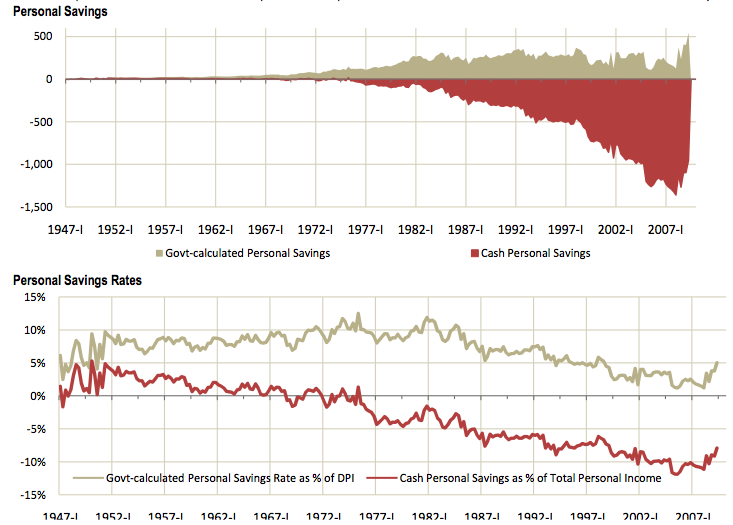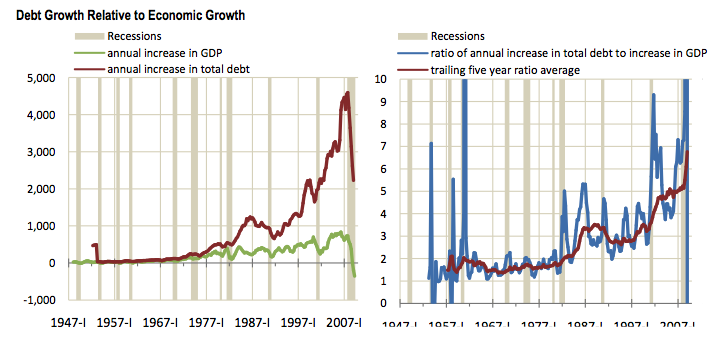Improved savings rate? Not exactly.
Mark Warywoda of Addenda-Capital.com up in Canada offers up some thoughts on why we should not read too much into the recent improvement in Savings Rates:
“So far, all we have had is a two-quarter bump up in personal savings rates — that is trivial related to the outstanding debt burden. The debt-to-income ratios have barely budged, given that income had fallen at the same time that spending had fallen.
How is it was possible that debt-to-income ratios hadn’t improved much when the savings rate had gone up to 5%. The short answer is it comes down to the simple equation: Savings = DPI – personal outlays.
A true savings rate should compare personal outlays to only the portion of personal income that’s actually spendable (ex supplemental benefits). A savings rate computed on that basis remains stubbornly very negative. And debt burdens remain atrociously high, at a time when incomes and asset values remain under pressure.
Until about 1970, personal outlays (dominated by Personal Consumption Expenditures (PCE) (96.6%), but also including interest payments and transfer payments) were consistently held under the amount of cash receipts — but not in recent decades.”
And a few charts that demonstrate this:
While the official personal savings rate has always been positive, though trending down over time since 1982 until 2008, the unofficial personal savings rate has trended down since WWII, turning negative in the 1970s, and exceeding -10% for much of the 2000s . . .
Debt Growth Relative to Economic Growth Economic growth has increasingly relied on debt growth. The government is trying to preserve economic growth by levering up to fill the void left by private sector deleveraging. But will it be able to do so for as long as house-holds need to continue to delever? Consumerssumers over- consumed for years (because they could — because of housing “wealth”, MEW and excessive leveraging). Leverage allowed consumers to, over the course of the decade, basically get a bonus year’s worth of spending relative to pre-2000 historical spending norms.
>
Good stuff . . . thanks, Mark.




What's been said:
Discussions found on the web: